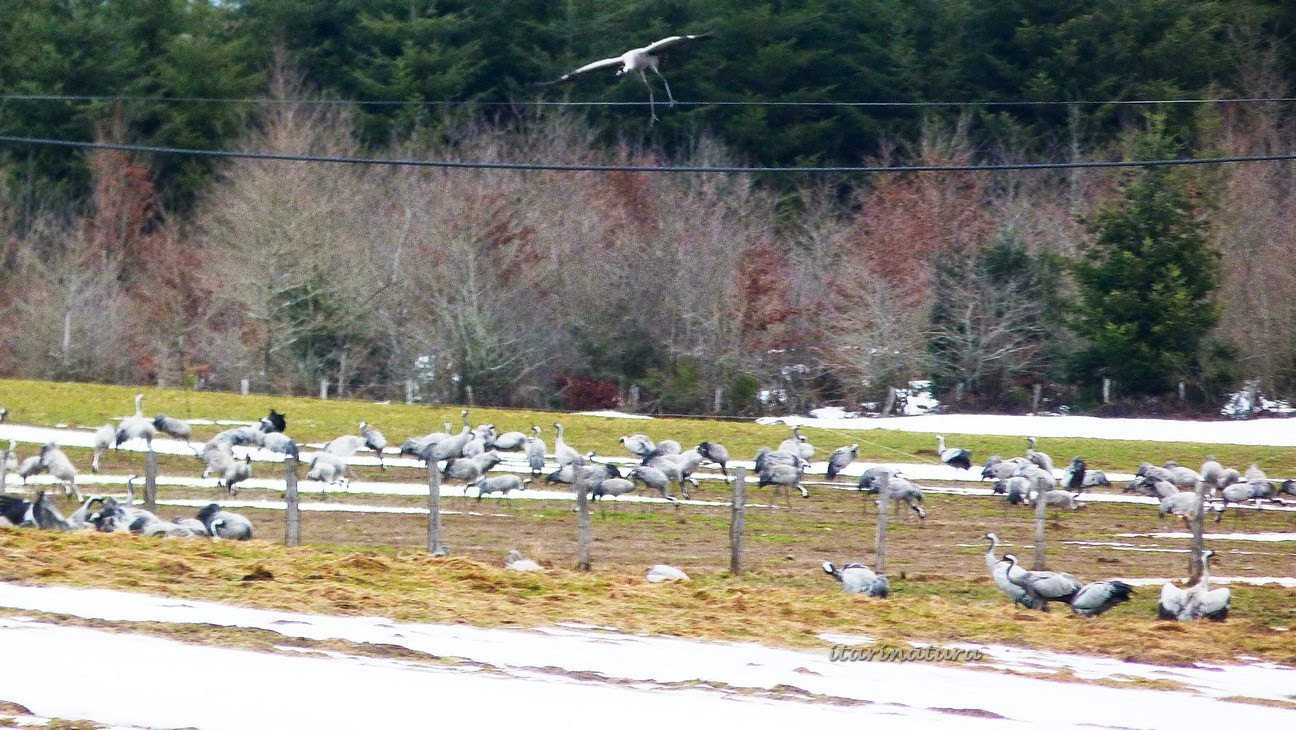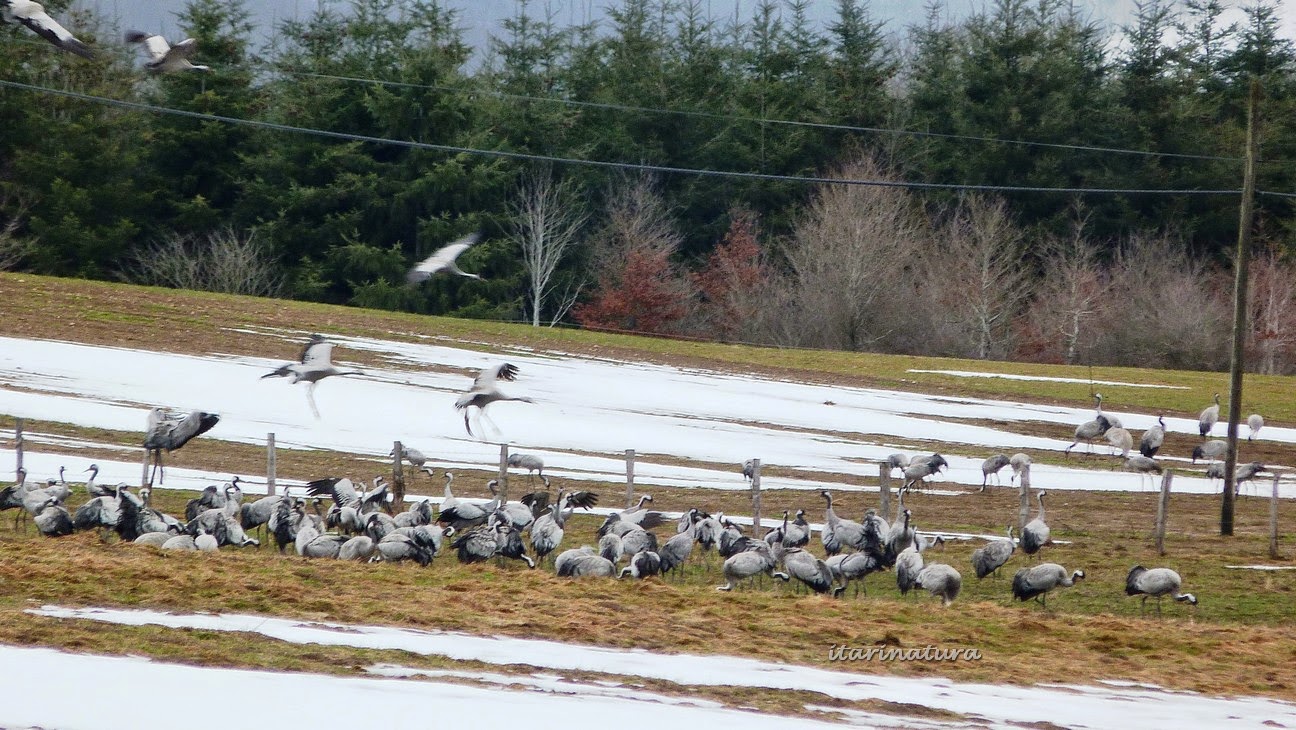After being snowing heavily during all February and have an historic snowfall, the rain came. The snow began to melt causing floods that were affecting localities of the midle and south of Navarre..
In this bend the Irati River flooded the road and was cut overnight.
 |
| Irati riveer between Orbara and Aribe ( Aezkoa valley) |
when the snow melted, the grass was been visible, and herbivores went quickly to eat grass that was hidden.
 |
| When snow began melting |
 |
| Deer grazing. Picture taken from the window of my house. |
But the field mice ( Apodemus sylvaticus) and moles (Talpa europea) also took advantage of these days of tranquility to leave their burrows. The Wildcats (Felis silvestris) stand guard at the entrance of molehills or mouse burrows, waiting to attack minimal movement.
Sometimes, in the same meadow, I saw a fox, 4 deer and one wildcat.
On another occasion, I saw up to three Wildcats in the same field, and a fourth in the other side of the Irati river.
 |
| Wildcat (Felis silvestris) |
Often they are near from the villages, so, how can we recognize if there is a Wildcat or common cat, at first glance, and from far away ?
- Color: all of them have earth color, to blend with the environment. Sometimes they hybridize with domestic cats, and can be really difficult, if not impossible, know if they are hybrids or not, from far away. If unfortunately we find one dead, there are typical design of dark stripes patterns on its back.
- Tail: Much thicker than a domestic cat, has several broad dark rings, and the end with a black mark.
- Size: There are more corpulent.
- Behavior: Always they are exceptions, but if it is a domestic cat let us come closer. If the wildcat is observed, and is relatively far, will tends to flee, and if we are too close, about 25 meters, often he sticks against ground watching us, and if we have not seen him moving before, we can think it is a mound of a molehill, or cow dung.
 |
| This saw me |
 |
| With snow are more visible. |
 |
| Crouched, fixing his gaze in Me |
But also March also brought a spectacular migration.
At first the cranes came in a very good day, but the weather worsened again. Then,the white storks came, and some black storks too.
 |
| white storks in Ekai, near from Agoitz/Aoiz (Navarre) |
 |
| White storks (Ciconia ciconia) on the way to the rest of Europa. |
Somewhat later, on March 5, they also appeared in Orbaizeta, dozens of them.
Older people commented place only once saw something in this village.
It happened that there were some badweather days, after having been rising temperatures and the birds that were already on the way,
they met the Pyrenees covered with clouds, and decided to wait.
In the Santiago´s way, at the crossroads of Auritz / Burguete the road to Garralda, We could see thousands and thousands of cranes circling above the meadows as deciding what they would do.
 |
| Ortzanzurieta mountain,in the end, and Auritz in the end left |
 |
| Eurasian stone- curlew (Burhinus oedicnemus) |
 |
| Black stork( Ciconia nigra) |
Days later appeared lapwings, little Egrets and some flocks of small birds that I could not identify.
 |
| little Egret (Egretta garcetta ) and lapwings in the bottom |
 |
| Lapwing (Vanellus vanellus) |
The flowers that you can see below, are usually the first year to bloom by mid-January, but this year have been delayed until the first week of March!
As I have said on other occasions
, The snowdrop (Galanthus nivalis) is a rare survivor of the flora that we had here in the last Ice Age. When the ice move away to the north, most of the plants and animals typical of this climate were disappearing, but some of them resist, always close to the border of extinction.
 |
| Snowdrop (Galanthus nivalis) |
Finally, a photo of the full moon of March. The winter sky is spectacular to see some constellations of this time as Leo or Orion, and have a clean atmosphere. Of course, dressed with warm clothings.
 |
| Fullmoon in Nagore ( 5 mars 2015) |

















.jpg)






No comments:
Post a Comment